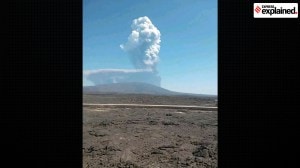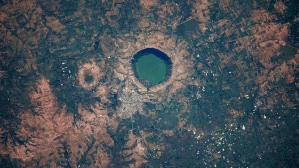Evolution of bird flu,and the race to keep up
On May 20,a 10-year-old girl in rural Cambodia got a fever.
CARL ZIMMER
On May 20,a 10-year-old girl in rural Cambodia got a fever. Five days later,she was admitted to a hospital,and after two days of intensive care she was dead. The girl was the most recent documented victim of the influenza virus H5N1,a strain that has caused 606 known human cases and 357 deaths since it re-emerged in 2003 after a six-year absence.
H5N1 can race through bird populations,and the World Health Organization suspects the girl was infected while preparing chicken meat for a meal. While humans are not ideal hosts for H5N1,bird flu viruses do sometimes manage to adapt for easy transmission from human to human,and the results can be devastating. In 1918,one such transformation led to the Spanish flu pandemic,a global outbreak that claimed an estimated 50 million people.
To better understand the possibility of H5N1 making a similar transformation,two teams of scientists recently manipulated the virus until it could spread through the air from one ferret to another. If a flu virus can infect a ferret,then it could theoretically infect other mammals,including humans. The scientific community became embroiled in a debate about whether the details of this research should be published; security experts,among others,feared that the information could be used to develop a biological weapon.
After months of arguments,a US federal advisory board recommended that the results be published in full. In May,Nature published the first of the two controversial papers; now the second team has published the results of their experiments in the journal Science. The experiments offer two examples of how H5N1 could theoretically become a human flu.
Its important work, said Marc Lipsitch,a professor of epidemiology at Harvard. The most important thing it did was put to rest the claims that H5N1 just couldnt be transmitted between mammals. We know this is a serious possibility.
But just because such a virus can exist doesnt necessarily mean that it will evolve in the wild. How flu viruses cross the species barrier remains deeply mysterious. We know that it happens,but we also know it must not be easy, said Dr Jeffery K. Taubenberger,a virologist at the US National Institutes of Health who has studied the 1918 flu. Taubenberger and other researchers warn that we dont know enough about the flu to say how likely it is that H5N1 will take the two paths presented in the new papersor a different path.
The new paper describes the more straightforward of the two experiments. Ron Fouchier of the Erasmus Medical Center in the Netherlands and colleagues started off with H5N1 isolated from an Indonesian patient and introduced mutations to the virus genes. They then transferred the virus from one ferret to another,allowing more mutations to accumulate. After five mutations,viral strains emerged that were able to spread from one ferret to the next through the air.
In another paper in Science,Derek Smith,an evolutionary biologist at the University of Cambridge,and his colleagues investigated how easy it would be for natural H5N1 to acquire the five mutations identified by Fouchier. They found that two of the mutations have arisen numerous times in the wild. In one group of closely related H5N1 viruses,both mutations are present in their genes,so they would need to acquire only three more mutations to spread between mammals.
A flu infection can produce 100 trillion new viruses in a matter of days. And because these viruses have a high mutation rate,just about every new virus will be slightly different from its ancestor. Smith and his colleagues found that under plausible conditions,there was a chance that the flu viruses could gain the final three mutations in a single person during a single infection.
But figuring the exact odds is tricky. Its possible that the chances are one in a thousand,and weve just gotten lucky, Smith said.
The Nature paper,by Yoshihiro Kawaoka of the University of Wisconsin and colleagues,offers a different path to a human form of H5N1a path based on a kind of viral sex. Sometimes two viruses simultaneously infect a host cell. The cell makes new copies of both viruses genes,and they are mixed together as they are packaged into protein shells. This process,called reassortment,occurs every year when different human flu strains infect the same person at once. It also happens between viruses that normally infect different species. Over the past century,the 1918 strain has periodically mixed with bird flu viruses,leading to new pandemics.
No one knows the probability that H5N1 would reassort with a human flu. All researchers know is that a hybrid between H5N1 and a human flu has not been discoveredyet.



- 01
- 02
- 03
- 04
- 05




























